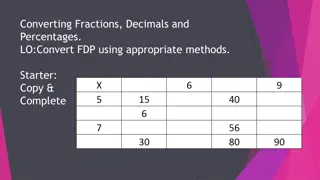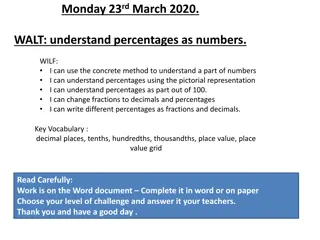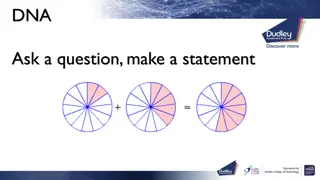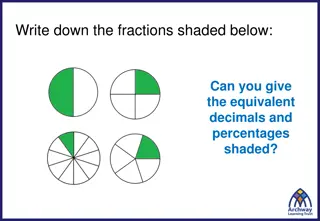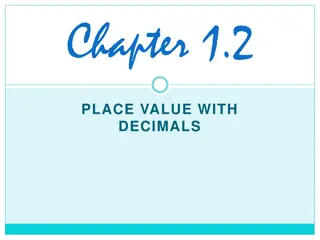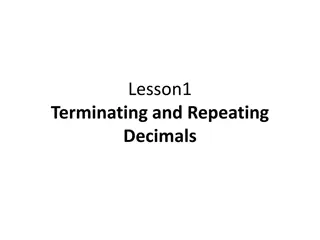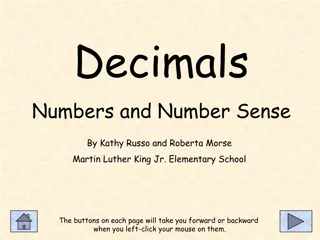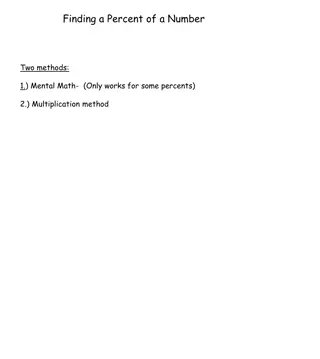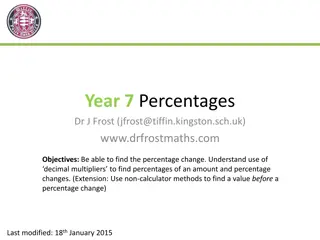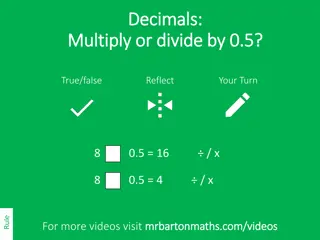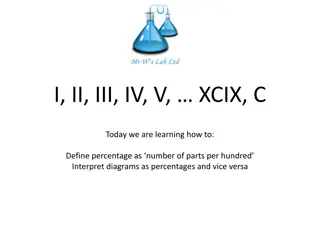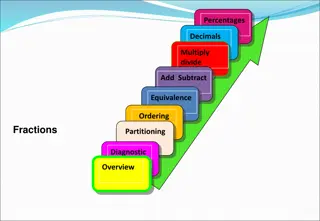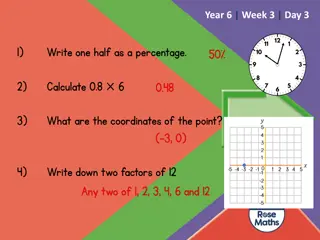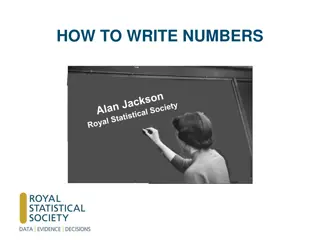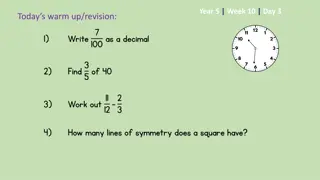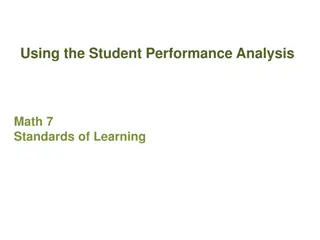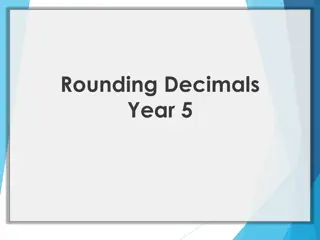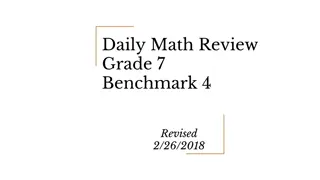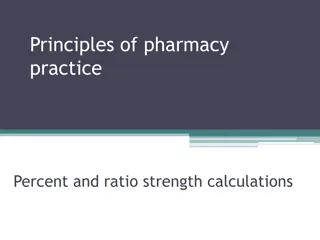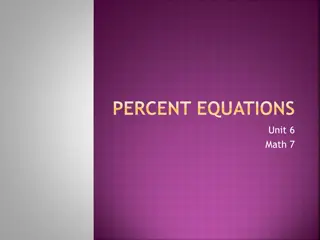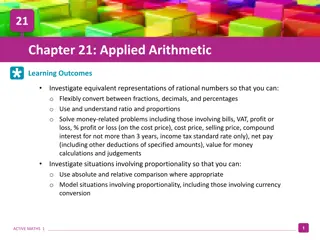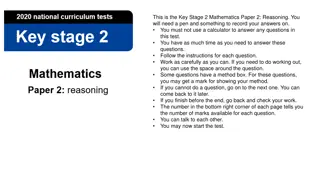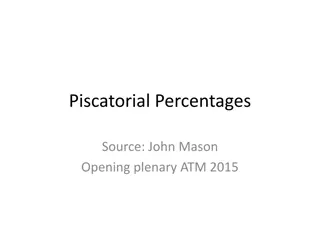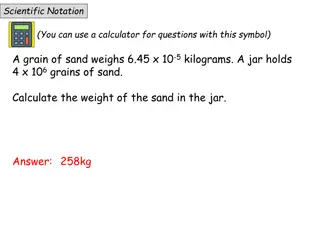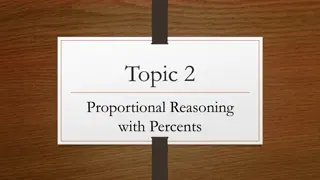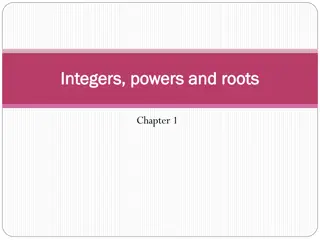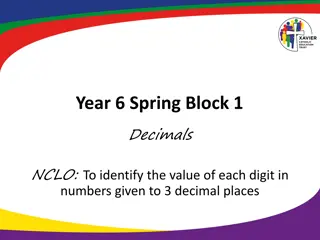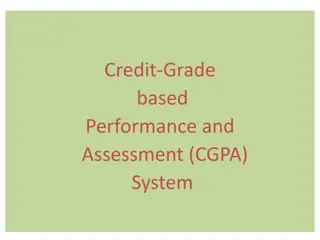Understanding Decimals and Percentages: A Comprehensive Guide
Decimal numbers based on the number 10, place value, multiplying and dividing decimals by powers of 10, rounding techniques, and how to round numbers are explained in detail. Practical examples and exercises included for better understanding.
Download Presentation

Please find below an Image/Link to download the presentation.
The content on the website is provided AS IS for your information and personal use only. It may not be sold, licensed, or shared on other websites without obtaining consent from the author. Download presentation by click this link. If you encounter any issues during the download, it is possible that the publisher has removed the file from their server.
E N D
Presentation Transcript
Unit 9 Decimals and percentages
A Decimal Number (based on the number 10) contains a Decimal Point.
Place value. When we write numbers, the position (or "place") of each digit is important. For example: In the number 327: the "7" is in the Ones position, meaning 7 ones (which is 7), the "2" is in the Tens position meaning 2 tens (which is 20), and the "3" is in the Hundreds position, meaning 300.
Multiplying and dividing decimals by powers of 10.
P. 131, Ex 9A Q1 + 2 + 3
Rounding Rounding means making a number simpler but keeping its value close to what it was. The result is less accurate but easier to use.
How to round numbers? Decide which is the last digit to keep. Leave it the same if the next digit is less than 5 (this is called rounding down). But increase it by 1 if the next digit is 5 or more (this is called rounding up). P. 133, Ex 9B Q1 (a,b,c,d) + Q2 (a,b,c,d) + Q3 (a,b,c,d) + Q4 (a,b,c,d) + 9 + 10


